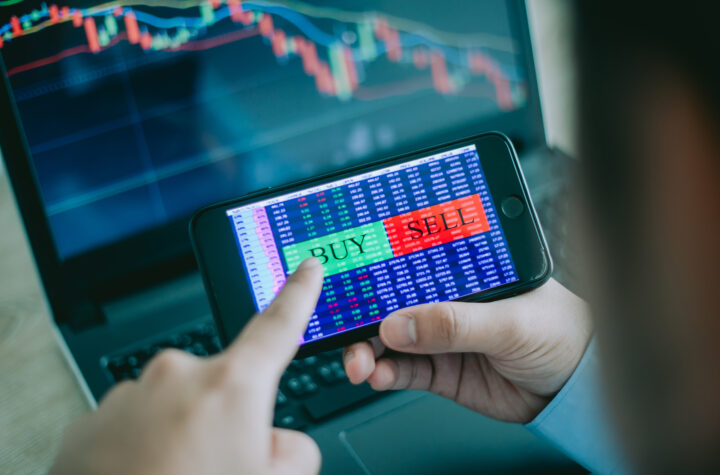Before I began writing this blog, I was a champion seller of bug juice.
But don’t think that I was working at a lemonade stand, or spending my time crushing insects. Rather, my bugs were microscopic, and numbered in the millions. And the “juice” they produced were liquids today known as Biologic Drugs, some of the most important drugs in Modern Medicine. Biologics are drugs produced by living bacteria that have been bioengineered to work as factories. It’s very likely that you know someone who takes Humira for arthritis, Neulasta during chemotherapy, or Lantus for Diabetes. If so, you already understand these medicines have been both highly beneficial and highly costly for Western Society. Both highly beneficial and highly expensive? Sound like a good business? It is.
Maybe too good. Drugs like Humira have generated controversy as being so expensive, that they threaten to bankrupt healthcare systems across the Western World (according to Forbes.com, one patient on Humira can cost $50,000 per year). Of course these medical breakthroughs have enjoyed varying degrees of patent protection since their introduction onto the market. But patents don’t last forever and many aspiring generic pharmaceutical companies have hungrily eyed this market.
But copying Humira hasn’t been so easy. If engineering living organisms to produce disease crushing medicine sounds complicated, it is. As a matter of fact, the industrial processes have been so complicated, that aspiring manufacturers of generic biologic drugs have been forbidden from using the term “generic” which implies that the copycat drug is exactly the same. Instead, the mandated term for a biologic knockoff is, “biosimilar,” because all attempts at knock off drugs have resulted in just that; drugs that were very, very similar, but not the same as the mighty Humira.
Engineering complexity in and of itself limited the number of companies that would dare to copy biologics; a PhD student in India cannot cook up Neulasta in a university lab the same way that he could concoct a copy of, say, Lipitor. But that very same industrial complexity afforded biologic innovators yet another way to forestall competition. Patents. Lots and lots of patents around the complex manufacturing processes necessary to bend bacteria to our will.
For example, even though certain basic Humira patents expired long ago, other, more obscure patents related to the manufacture of the drug are still very much in force. Without access to the exactly correct combination of patents, it is physically impossible to create a biosimilar.
ENTER COHERUS
These two barriers to entry have meant that only a few companies with very established balance sheets have dared to strive towards the creation of biosimilar drugs. For example, Mylan Pharmaceutical, a company with a market capitalization of $16 Billion and a thirty year track record is attempting to break into the market for Humira. But few companies have been founded just to make biosimilars.
Except Coherus Biosciences. This scrappy upstart listed shares on the NASDAQ stock market in 2015 with the express goal of developing a wide ranging portfolio of different biosimilar drugs. This was indeed a bold dream to bet on, and the road has been rocky. Shares that once sold for as much as $35 can now be purchased for around $12.
This is because, as I previously mentioned, biosimilars are tough. The “twin dragons,” processes and patents, have meant that Coherus has faced many setbacks in its short history as a public company. But now the hour of victory seems close at hand.
On September 25, 2018, Coherus finally received approval to sell its biosimilar copy of Neulasta in Europe. Neulasta is a cornerstone of cancer treatment in the Western World; it helps boost the body’s production of white blood cells during chemotherapy treatment.
This finally gives Coherus a product to sell, and a real chance of revenue as soon as Q1, 2019. Coherus is also very close to achieving FDA approval in the United States, with approval expected in the next few months. This would instantly give Coherus access to a $3.9 billion market for American oncology patients. (Source, Evaluate Pharma, 2018).
FLYING HIGH?
You would think that the company’s share would explode upward with this good news. After all, up until now investors have been asked to hold shares in a company with a lot of promises, but no revenue. Now real cash flow should be just around the corner.
The market’s reaction to the big news? “Yawn….whatever….” The shares have actually fallen about 20% since the announcement! How could this be?
It’s hard to understand! But here are a few potential reasons:
1. Approval isn’t money. Money is money: It looks like Coherus will have a good chance at convincing doctors, governments, and insurers that its biosimilar is just as good as Neulasta, but if you were a doctor charged with treating fragile cancer patients, would you want to be the first one to take that risk?
2. There is thin competition in the market to bring a Neulasta competitor to market, but there is competition. Remember Mylan with the $16 billion dollar market capitalization and long business track record? They scored FDA approval for their Nelulasta copy in June, 2018. Just a few competitors in a $4 Billion dollar market will probably mean profits to go around, but such competition could weigh on Coherus’s share price until they prove that they can play with the big boys…
3. No real reason. Coherus is just another biotech name, and so it will ride the inevitable mood swings of analysts and pundits, as they indiscriminately sell or buy the biotech sector based on an unpredictable set of factors. If Biotech goes up, Coherus goes up. If biotech goes down, Coherus goes down. They aren’t yet a big enough name to be differentiated from the crowd for the average investor.
Of course here at SickEconomics, we are always looking for opportunities caused by factor #3 listed above. We live for the moment where we can buy $1 of value for just $.25
But how exactly would we figure out what Coherus is worth?
EXPLOSIVE GROWTH ON SALE?
The challenge with Coherus, and with many other small cap biotechs, is that without current revenue or profit information, we just have to guess at valuation. That scares off a lot of investors (as well it should; if this guessing game is not for you, seek a more conservative investment). That being said, we do have enough information to make some educated guesses on what Coherus should be worth in the future.
In the short term, Coherus hopes to realize revenue from the imminent launch of its Neulasta biosimilar. This scenario should unfold over the next 24 months. However, this small company has big dreams. It also has a rich pipeline of biosimilar candidates that are well on their way to approval as well. So, based on current sales of the original biosimilars, we can drive reasonable estimates of what Coherus’s revenue could be in the short term scenario, and in the long term scenario.
Worldwide, Neulasta did about $5 billion dollars in sales last year (Source:EvaluatePharma, 2018). Historically, name brand medicines, especially expensive name brand medicines, have rapidly lost market share to generic drugs. However, in this case, we are still early in the story of biosimilar drugs, and trust must be built in the medical community. Cancer is a particularly demanding disease with oncologists who will be cautious until they truly feel secure in choosing a biosimilar drug. And Coherus will have at least Mylan to compete with.
So let’s make a conservative estimate that Coherus can capture 10% of this market over the next three years. That would leave Coherus, currently bereft of cash flow, with approximately, $500 million dollars in sales. Does that mean the company would be worth $500 million?
No. A very common metric used to value startups with great promise, but little profit, is called the “Price to Sales Ratio.” The term that I prefer is “price to sales multiple.” So for instance, if you owned a convenience store and that store did $100,000 in sales, and you sold the store for $300,000, then the store was valued at a “multiple” of 3. You could then look around the neighborhood, and see what similar stores were sold for, and determine if your store was sold at a “high multiple,” or a “low multiple.”
These terms are typically used today. For example, a headline on Bloomberg news read “$120 Billion doesn’t make Uber a real company.” The author, Shira Ovide, pointed out that Uber did just $10 billion in sales in 2017, meaning that Uber would be hitting the market at a multiple of 12. This is a sky high multiple! For reference, Facebook currently trades at 8 times revenue, and Twitter trades at 7 times revenue. (Source:Bloomberg.com, 10/16/18).
While the companies named above are all young technology companies with minimal competition and strong barriers to entry, they are not biotech companies. This would be a bit like comparing the value of a local pizza shop to the value of a dry cleaner. To get a more accurate valuation, it would be better to compare “Apples to Apples.”
The NYU Stern School of Business is quite happy to help. In data published January 5, 2018, 952 biotechnology companies traded at an average of 7.29 times revenue. Regular old pharmaceutical companies traded at 3.54. Since Coherus is somewhere between the two categories, let’s use a conservative (and easy to calculate) multiple of 4 times revenue. Four times $500 million in sales would give Coherus a market value of $2 Billion dollars.
Today the company is only worth $820 million on the open market. So it’s not impossible that shares that today trade at $12 could really be worth $30 or more!
But Coherus ambitions go far beyond one drug. Once you have learned to train bacteria to work for you, then you have the key in your hand. Coherus has made credible scientific progress towards launching a Humira copy in 2022, and several ophthalmology biologics by the middle of the next decade. Total sale of those very expensive biologics today? $40,000,000,000.
Let’s say, once again, that Coherus eventually captures 10% of that market. That would mean that Coherus would rocket from $0 in revenue to $4 Billion in revenue over the next ten years. If we once again applied a very conservative price to sales multiple of 4, that would give Coherus an eventual value of $16 Billion. That implies that todays shares, valued at $12, could be worth $240 not that far in the future.
Would you be interested in a 2000% return in just 10 years?
If the use of the phrases “should be” and “could be” would cause a lack of sleep on your part, then Coherus is not for you. But, if you believe, as FDA commissioner Scott Gottlieb has stated many times, that the current lack of competition in the biologic market is simply unsustainable, then Coherus is a solid bet. As biotech investors, we are not pure gamblers; we do our research, and we make calculations about risk and reward. For many people, Coherus is a risk worth taking.
November 4th, 2018 Update:
After a long journey filled with twists and turns, Coherus Biosciences has gained FDA approval for its pegfilgrastim biosimilar, Udenyca. This biologic, known commercially as Neulasta, is a cornerstone of oncology treatment, garnering $4.5 billion in annual sales in America alone. If Coherus were to capture just 10% of this market, the stock could double in price. According to a press release published by the company, Coherus is ready to launch sales immediately:
“For a number of reasons we believe the oncology marketplace is ideal for biosimilars, and we are committed to a vigorous product launch,” said Chris Thompson, Senior Vice President of Sales. “Our oncology-focused, highly capable and fully-staffed commercial team is in place. We are confident that our U.S.-based manufacturing network has the finished goods in inventory to meet our highest expected demand for an extended period.”
The launch of Udenyca will represent an important test for biosimilars in the American Pharmaceutical Market. How quickly will the medical community accept this cost saving biosimilar? How great of a market share will Coherus be able to conquer? All of these remain exciting questions for cancer patients, biotech watchers, and, of course Coherus shareholders…
Disclosure: The SickEconomist owns a long position in Coherus Bioscience.







Good insight. I wonder how competition plays over the next few years. Any success from Coherus and/or Mylan will undoubtedly spark other heavy hitters to join the party. My guess is that the slightest whiff of success will lead Coherus’s acquisition. Why spend the time and money reinventing the wheel when you can buy one for $80.